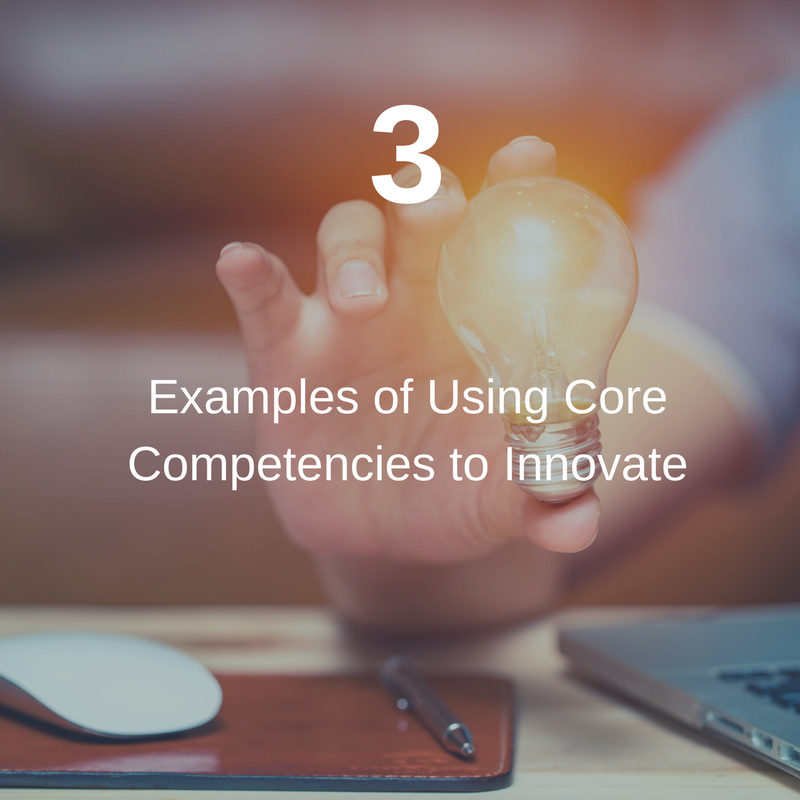In our fast-moving world of innovation and disruption, some leaders may wonder if it is no longer beneficial to hone core competencies over time. Are business core competencies - those unique combinations of capabilities and resources that make your business operationally different and give you a competitive edge - a strategic tool of the past?
to hone core competencies over time. Are business core competencies - those unique combinations of capabilities and resources that make your business operationally different and give you a competitive edge - a strategic tool of the past?
It takes years and a lot of focused energy to hone these diverse skills, activities, and technologies to near perfection, or to the point that they would be too difficult to replicate by competitors. So, is it still worth it to play the long game in our rapidly changing marketplace? Here are some great business core competency examples to help you define yours.
Why Business Core Competencies are Still Beneficial
Increase the value of your product/service.
Identifying and honing your core competencies enables you to deliver unique value to your customers. And, in order to do this, you have to understand what your customer values. If you have identified the core customer and done your research into what they really need, you can work to develop core competencies that benefit them substantially, that they can’t imagine living without. Your core competencies can help you build brand and customer loyalty. Core competencies examples like those we have provided can often provide fuel for thought to more clearly define them.
A Business Core Competency involves all three:
- People: A core competency provides your business access to a variety of markets and customers.
- Process: A core competency provides the unique value your business brings above and beyond the end-product benefits.
- Platform: A core competency provides unique attributes difficult for competitors to imitate and helps build a "moat" around your business from competition
Focus and align your team’s energy and investments.
Identifying the core competencies you want to advance will help you allocate your resources appropriately. Communicate your competencies to your company and get your people involved in developing those areas further. Along with the rest of your core strategic foundation, knowing your core competencies gives you a filter for opportunities - if they don’t help you achieve your long term strategies, including developing your core competencies, then you can and should say no. As for determining where to spend training and research resources, use them to enhance your team’s ability to leverage your core competencies and hone them further. Find the right strategic partners that will help you perfect your strengths. Consider outsourcing activities that aren’t part of your interconnected web of activities and processes that create your core competencies.
Provide a platform for innovation.
As Bain & Company points out, identifying core competencies can help you “branch into a wide variety of related markets.” In other words, once you’ve perfected your competencies, you have some tools you can leverage to innovate in other ways. How can you use your core competencies in another market or to disrupt in your own market You can use your core competencies to “invent new markets and quickly enter emerging markets” and “widen the domain in which the company innovates” according to Bain & Company.
This all sounds pretty good in theory, but how does it look in practice? Fast Company offers the following business core competencies examples of companies who have leveraged their core competencies for innovation and growth:
- Apple - used a core competency of design to “attack all types of hardware and software” and disrupt multiple industries, like the music industry.
- Netflix - expanded a core competency of content delivery to include not only physical and digital content but also create their own original content.
- Nike - used a core competency of product development to burst through manufacturing shoes and widen their circle of competency to a digital platform.
The Fast Company article does caution companies not to stray too far from their core when using competencies to innovate; “there is perhaps a limit to how far a company should stray outside its core competency.” The example they give is about Nike’s foray into MP3 players. Their FuelBand and other Nike+ digital products were initially more successful since they were “a natural extension that relates more directly to what we do and who we are as a company." Even then, the FuelBand is no longer in production.
Good luck with honing your core competencies by utilizing our business core competencies examples and then using them to innovate! Use your annual planning session as a great time to reinforce your core competencies and drive innovation.
Want to learn more about business Core Competencies and examples? Check out these additional resources:
How to Leverage Your Core Competencies to Create a Competitive Advantage
How Do Core Competencies Influence My BHAG?
Rockefeller Habits Methodology and Core Competencies
What are Some Great BHAG Examples?
How do I Create KPIs That Can Measure my Core Competencies?
Photo Credit: iStock by Getty Images
Photo Credit: iStock by Getty Images



 LinkedIn
LinkedIn
 Facebook
Facebook


